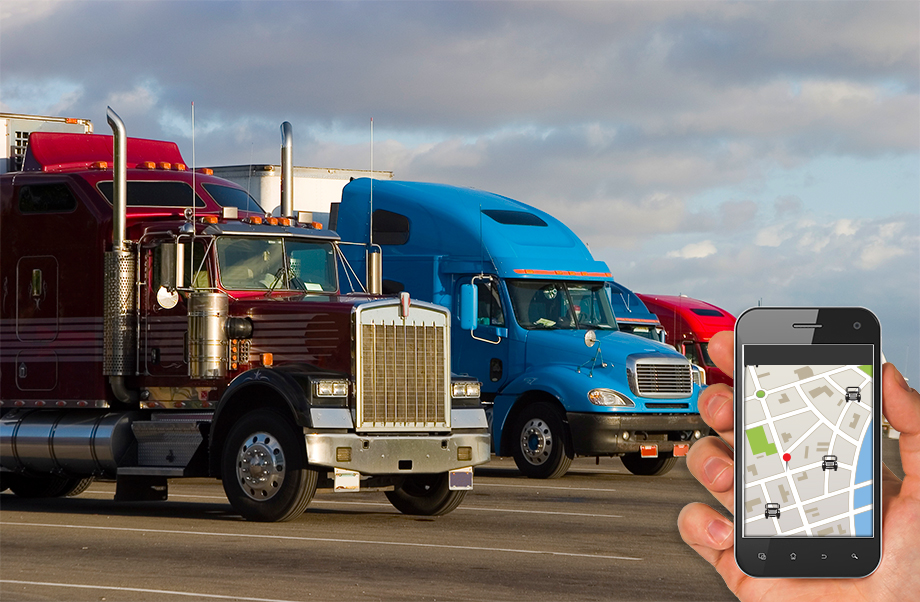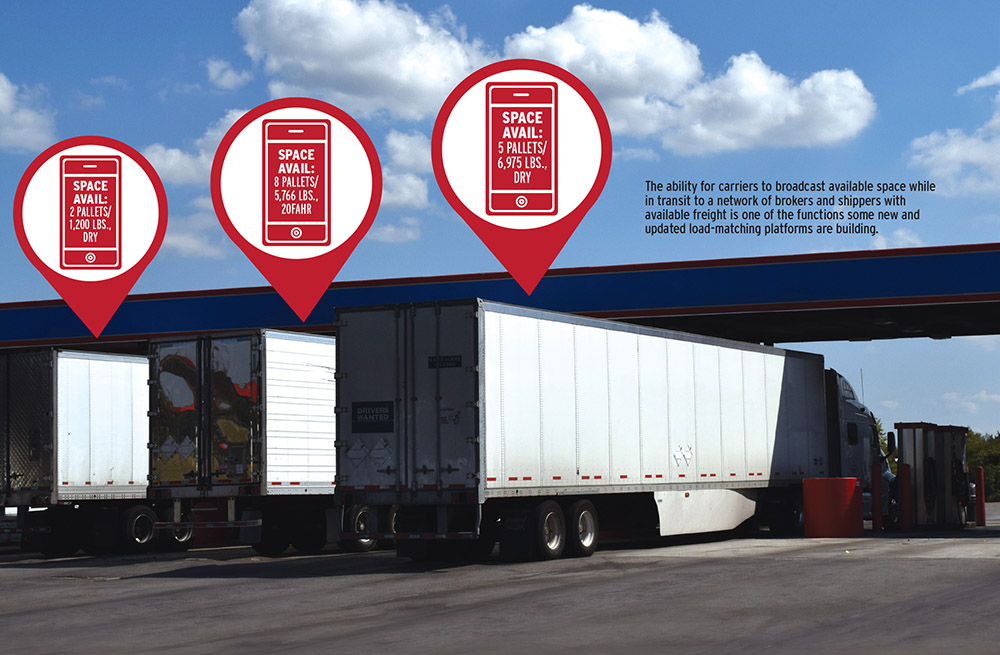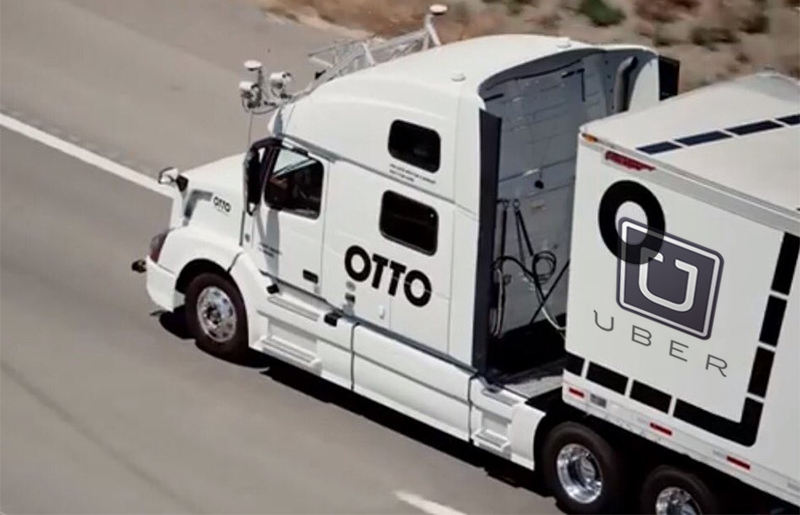
We do not tend to realise the voluminous consumption of materials that we indulge in as a consumerist society. Moreover, we do not realise the logistical challenges we face in order to avail all these materials within touching distance of our daily lives. This is why it comes as no surprise that over 70% of all freight that enters American shores is transported around the country by trucks. This amounts to a whopping 10 Billion tonnes of freight being transported by trucks in a year, making it a $800 Billion industry; and one can not stress how important the trucking industry is for the smooth functioning and growth of the industrial sector in any economy. Travelling intercity and interstate, with laws and regulations supporting their framework, the trucking sector has been undervalued for a while, but with the logistical backing of the booming software and telematics industry, a lot is changing. Whether it is the management of loads or it is the efficiency of transportation over long distances, companies are finding a great deal of promise and opportunity to invest in the sector, providing another lucrative area for the confluence of logistics and technology.
Table of Contents

Due to the immense fragmentation of the industry by shippers, carriers, and intermediaries that transact business between them, the progress of the industry is not as evident as one would expect. Relying on age-old technology and archaic family traditions does not boast too well when it comes to revenues, especially when e-commerce and telematics are making massive strides today. Thus, as one would expect, the potential has been noticed, and firms are developing softwares to run the entire trucking industry via minimalistic apps. The way most shipping works today, companies work through a brokerage firm which makes calls to trucking companies and arranges the best deals for its customers. The broker takes a commission between 15 and 20 percent. By eliminating the middle man, the entire process of connecting a shipper to a carrier through an app becomes much more lucrative to both parties. With pricing based on the freight’s supply and demand, a more real time pricing model can be developed, allowing shippers and carriers an opportunity to cash in on the goods. By signing agreements with trucking firms and providing logistical insights into the transportation scheme, the app also generates a self sustaining revenue to begin with, turning it into a hefty profit as the network widens.

However, what promises to be a profitable industry to step into might not entirely be that, because the logistical obstacles that the freight industry comprises are quite deeply rooted. The first hurdle comes with the fact that family businesses in shipping and moving are reluctant to part ways with the age-old traditions of transporting freight. It obviously does not help when they realise their margins shall not be as assured as they used to be when the real-time pricing models are put in place, but the availability of a wide network of carriers and shippers certainly lures them in. Another massive challenge is that of empty containers. Repositioning an empty container is almost as costly as moving a loaded one. When there is no cargo to be found for a return leg, containers need to be repositioned empty, which is quite a burden as it would lead to spending double on a singular shipment. The industry currently spends a total of $16 Billion on empty trucking, an enormous 15% of all operation costs related to container assets. It is upon the brokers and middle men, who take the 15-20% commission to mitigate such network issues, but more often than not, none of this pans out. It obviously doesn’t matter to the broker, but its the carrier and shipper that suffer. With telematics and logistic-based mapping, app based softwares are battling hard to eliminate such losses. This also happens to be one of the most used selling points to switch to this technology.

One of the prime movers in the industry, as one would expect, is Uber Freight – an app that reveals very little to the layman, but does exceedingly well to connect a shipper to a truck, and provide a well versed system to transport any freight. By using the service of Otto – the self-driving trucks – Uber Freight promises to create a network of freight transportation that is fool proof and safe, and might have the potential to change the face of the trucking industry as a whole. While Uber Freights job listings in San Francisco and Chicago – the two of the heaviest freight moving cities in the US – show a series of openings, other startups are trying their hand at the market too. However, without an initial financial backing like that of Uber’s, it turns out to be quite a tough nut to crack. Another promising app is Cargomatic, who recently raised $8 Million in initial funding. The Cargomatic Shipper app allows users to list jobs by specifying freight dimensions, pick up and delivery information, which is then sent to a virtual dashboard where requests can be accepted through the Cargomatic Driver app. Once the freight is picked up, it can be tracked real-time while the delivery takes place, followed by proof of delivery and a bill upload once the freight is received on the other end. By following this single route system, the payment of return shipments and empty containers is reduced, and drivers are paid for distance and freight weight, allowing them to earn their rightful sum as well.

But how to the apps make money by providing these services? Well, there are different policies that allow apps to make their money, but one can generally expect a 3-5% transaction fee that is charged to the shipper who is transporting the freight. Based on the type and weight of the freight to be transported, the final cost of the transport is determined. Apps like Traansmission markets itself to be free for carriers and charges shippers 3% of load value as per-load transaction fee. Cargomatic charges 20% of the total transaction for their services, which may seem a little steep to begin with, but has a load of features that prove worthy of the cost. Minimal paperwork, higher container utilization, and guaranteed payment with fewer delays allows them to operate and hold a good market share at the moment. Thus, an average Cargomatic order would involve moving 1 ton of freight 20 miles for about $145. The pricing model can also determine the money an app makes per transaction. Keychain is one app that provides insight into how these real-time prices are determined. By developing a pricing algorithm based on 78 variables from diesel prices, routes, capacity in certain areas and traffic, a real-time price for the specified freight is quoted to the shipper. One of these includes a 6-12% margin on the shipment based on the type and value of freight that is being transported. By providing features such as instant messaging and real time communication for the cargo, they can afford to charge this rate, all of which adds up to a transparent pricing model.
Mobile solutions for drivers allow them to develop a networked and well laid out map of shipments that can be distributed well in advance to create a smooth logistical framework. These mobile solutions provide waiting lists with shipping requests, contact details of shippers, freight details including load type, pickup and drop off destinations, bill of lading instruments, and push notifications with the ability to build a trusted and good rating of themselves over time. Thus, these apps work on both ends and allow shippers as well as drivers the transparency that was absent for far too long with middle men and brokers sitting on telephone lines for hours, trying to earn the highest on their commissions.

In summary, it seems like the confluence of technology and logistics has begun engulfing yet another industry whose potential now seems to be boundless as we go into the age of scrupulous app development. We must also highlight the fact that Amazon is looking to cash in on this $800+ Billion industry by announcing their development of an app to handle freight transport. Its just that they have one massive advantage in the industry that others don’t: demand. As mentioned previously, demand and supply determine real-time prices of shipments. But when it comes to the world’s largest online delivery company, the demand for freight and shipment transport is so high that they could potentially take the entire industry by storm when they eventually decide to enter it!
